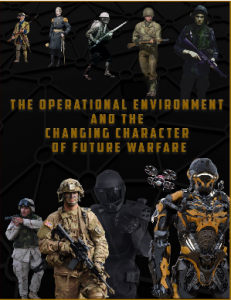 “While the U.S. military may not necessarily have to fight Russia or China, it is likely that U.S. forces through 2050 will encounter their advanced equipment, concepts, doctrine, and tactics in flashpoints or trouble spots around the globe..” — extracted from The Operational Environment and the Changing Character of Future Warfare
“While the U.S. military may not necessarily have to fight Russia or China, it is likely that U.S. forces through 2050 will encounter their advanced equipment, concepts, doctrine, and tactics in flashpoints or trouble spots around the globe..” — extracted from The Operational Environment and the Changing Character of Future Warfare
The Future Operational Environment’s Era of Contested Equality (i.e., 2035 through 2050) will be marked by significant breakthroughs in technology and convergences, resulting in revolutionary changes that challenge the very nature of warfare itself. No one actor is likely to have any long-term strategic or technological advantage during this period of enduring competition. Prevailing in this environment will depend on an ability to synchronize multi-domain capabilities against an artificial intelligence-enhanced adversary with an overarching capability to visualize and understand the battlespace at even greater ranges and velocities.
Ms. Elsa Kania, Adjunct Fellow, Technology and National Security Program, Center for a New American Security (CNAS), presented “People’s Liberation Army (PLA) Human-Machine Integration” at last month’s Bio Convergence and Soldier 2050 Conference. In this presentation, Ms. Kania addressed China’s on-going initiatives that seek to change military power paradigms via competition and innovation in a number of key technologies. This post summarizes Ms. Kania’s presentation.
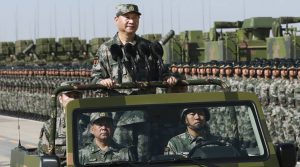
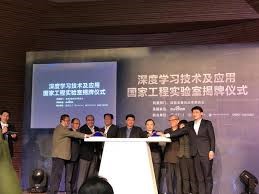 President Xi leads China’s Central Military-Civil Fusion Development Commission, whose priorities include intelligent unmanned systems, biology and cross-disciplinary technologies, and quantum S&T. Though the implementation of a “whole of nation” strategy, President Xi is leveraging private sector advances for military applications. This strategy includes the establishment of Joint Research Institutes to promote collaborative R&D; new national labs focused on achieving dual-use advances; and collaboration within national military-civil fusion innovation demonstration zones. Major projects concentrate on quantum communications and computing, brain science, and brain-inspired research.
President Xi leads China’s Central Military-Civil Fusion Development Commission, whose priorities include intelligent unmanned systems, biology and cross-disciplinary technologies, and quantum S&T. Though the implementation of a “whole of nation” strategy, President Xi is leveraging private sector advances for military applications. This strategy includes the establishment of Joint Research Institutes to promote collaborative R&D; new national labs focused on achieving dual-use advances; and collaboration within national military-civil fusion innovation demonstration zones. Major projects concentrate on quantum communications and computing, brain science, and brain-inspired research.
By 2030, China will be world’s premier Artificial Intelligence (AI) innovation center. Building upon their successes with Alpha Go, the PLA is seeking to establish a “Battlefield Singularity,” leveraging AI potential in planning, operational command and control, decision support tools, wargaming, and 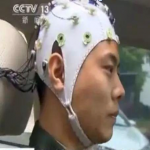 brain-computer interfaces controlling unmanned systems. They will deepen military-civil fusion AI initiatives with Baidu, Alibaba Group, Tencent, and iFLYTEK. AI is seen as a potential game-changer by the Chinese, a way to augment perceived military shortcomings.
brain-computer interfaces controlling unmanned systems. They will deepen military-civil fusion AI initiatives with Baidu, Alibaba Group, Tencent, and iFLYTEK. AI is seen as a potential game-changer by the Chinese, a way to augment perceived military shortcomings.
This focused initiative on innovation may result in China’s First Offset, characterized by integrating quantum satellites with fiber optic communication networks; human-machine interfaces; drone swarms able to target carrier task forces; naval rail guns; and quantum computing.
Potential areas for biotechnology and AI convergences include:
 • “Intelligentized” Command Decision-Making: The Joint Staff Department of the Central Military Commission (CMC) has called for the PLA to leverage the “tremendous potential” of AI in planning, operational command, and decision support. Ongoing research is focusing on command automation and “intelligentization,” with experimental demonstrations of an “external brain” for commanders and decision support systems for fighter pilots and submarines.
• “Intelligentized” Command Decision-Making: The Joint Staff Department of the Central Military Commission (CMC) has called for the PLA to leverage the “tremendous potential” of AI in planning, operational command, and decision support. Ongoing research is focusing on command automation and “intelligentization,” with experimental demonstrations of an “external brain” for commanders and decision support systems for fighter pilots and submarines.
 • Brain-Computer Interfaces: Active research programs in brain-computer interfaces are underway (e.g., at PLA Information Engineering University, Tsinghua University), enabling “brain control” of robotic and “unmanned” systems and potentially facilitating brain networking.
• Brain-Computer Interfaces: Active research programs in brain-computer interfaces are underway (e.g., at PLA Information Engineering University, Tsinghua University), enabling “brain control” of robotic and “unmanned” systems and potentially facilitating brain networking.
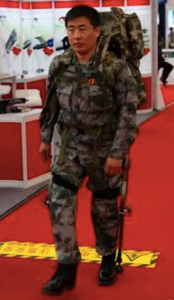 • Military Exoskeletons: Several prototype exoskeletons have been tested and demonstrated to date, augmenting soldiers’ physical capabilities, with the latest generations being more capable and closer to being fielded by the PLA.
• Military Exoskeletons: Several prototype exoskeletons have been tested and demonstrated to date, augmenting soldiers’ physical capabilities, with the latest generations being more capable and closer to being fielded by the PLA.
 • CRISPR in China: Gene editing is currently underway with animals and human embryos due to less stringent regulatory requirements in the PRC. BGI (a would-be “bio-Google”) is currently soliciting DNA from Chinese geniuses in an attempt to understand the genomic basis for intelligence.
• CRISPR in China: Gene editing is currently underway with animals and human embryos due to less stringent regulatory requirements in the PRC. BGI (a would-be “bio-Google”) is currently soliciting DNA from Chinese geniuses in an attempt to understand the genomic basis for intelligence.
 • Chinese Superintelligence: The Chinese aspire to develop “brain-like” or human-level AI. Their new National Engineering Laboratory for Brain-Inspired Intelligence Technologies and Applications, with Baidu involvement, is focusing on learning from the human brain to tackle AI, advancing next-generation AI technologies.
• Chinese Superintelligence: The Chinese aspire to develop “brain-like” or human-level AI. Their new National Engineering Laboratory for Brain-Inspired Intelligence Technologies and Applications, with Baidu involvement, is focusing on learning from the human brain to tackle AI, advancing next-generation AI technologies.
While technological advantage has been a key pillar of U.S. military power and national competitiveness, China is rapidly catching up. Future primacy in AI and biotech, likely integral in future warfare, could remain contested between the U.S. and China. The PLA will continue explore and invest in these key emerging technologies in their on-going drive for innovation dominance.
For more information regarding the PLA’s on-going innovation efforts:
Watch Ms. Kania’s video presentation and read the associated slides from the Bio Convergence and Soldier 2050 Conference.
Listen to Ms. Kania’s China’s Quest for Enhanced Military Technology podcast, hosted by our colleagues at Modern War Institute.
Read Ms. Kania’s “Battlefield Singularity Artificial Intelligence, Military Revolution, and China’s Future Military Power,” which can be downloaded here.
Check out Ms. Kania’s Battlefield Singularity website.

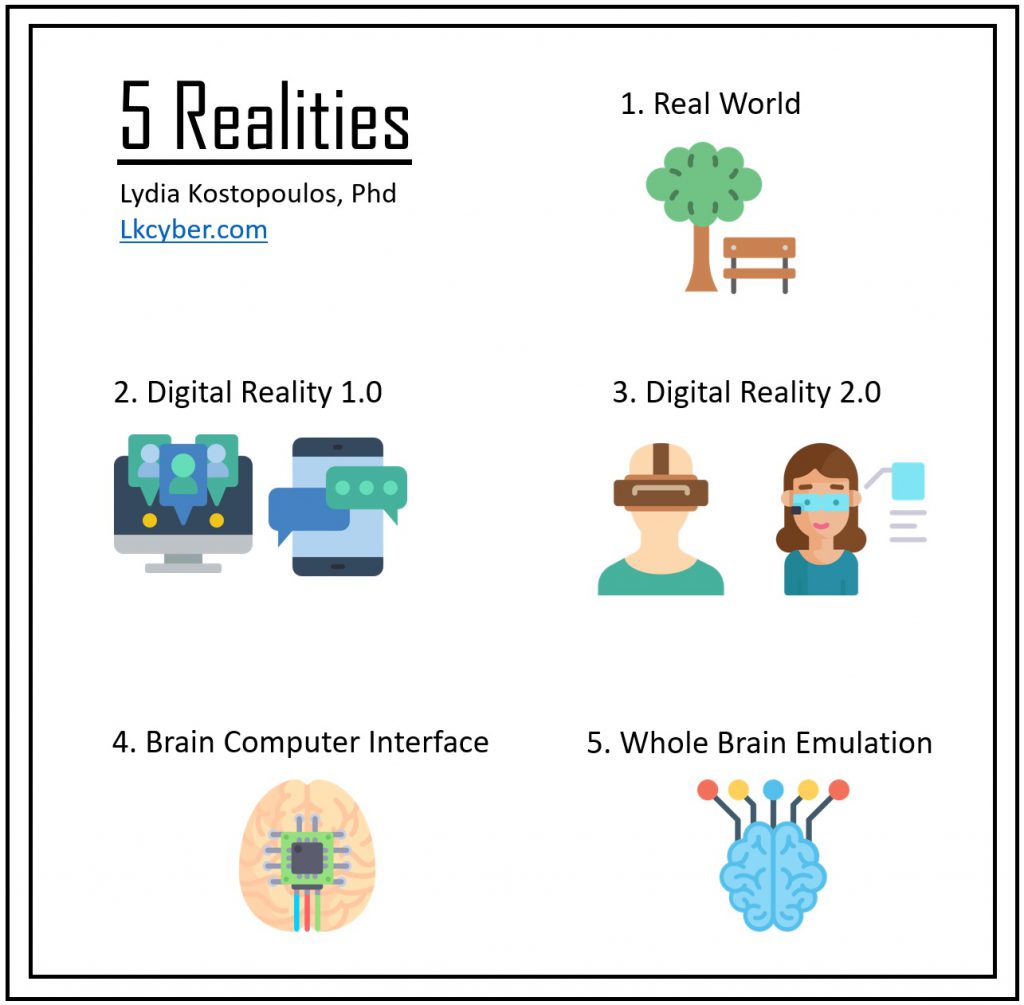
 1. Real World: Pre-internet real, touch-feel-and-smell world.
1. Real World: Pre-internet real, touch-feel-and-smell world. 2. Digital Reality 1.0: There are many already existing digital realities that people can immerse themselves into, which include gaming, as well as social media and worlds such as
2. Digital Reality 1.0: There are many already existing digital realities that people can immerse themselves into, which include gaming, as well as social media and worlds such as 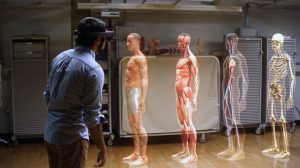 3. Digital Reality 2.0: The Mixed Reality (MR) world of Virtual Reality (VR) and Augmented Reality (AR). These technologies are still in their early stages; however, they show tremendous potential for receiving, and perceiving information, as well as experiencing narratives through synthetic or captured moments.
3. Digital Reality 2.0: The Mixed Reality (MR) world of Virtual Reality (VR) and Augmented Reality (AR). These technologies are still in their early stages; however, they show tremendous potential for receiving, and perceiving information, as well as experiencing narratives through synthetic or captured moments. 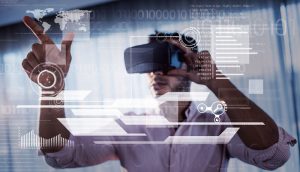 Suspended moments of actual real-world environments involve 360 degree cameras which capture a video moment in time; these already exist and the degree in which it feels like the VR user is teleported to that geographical and temporal moment in time will, for the most part, depend on the quality of the video and the sound. This VR experience can also be modified, edited and amended just like regular videos are edited today. This, coupled with technologies that authentically replicate voice (ex: Adobe VoCo) and technologies that can change faces in videos, create open-ended possibilities for ‘fake’ authentic videos and soundbites that can be embedded.
Suspended moments of actual real-world environments involve 360 degree cameras which capture a video moment in time; these already exist and the degree in which it feels like the VR user is teleported to that geographical and temporal moment in time will, for the most part, depend on the quality of the video and the sound. This VR experience can also be modified, edited and amended just like regular videos are edited today. This, coupled with technologies that authentically replicate voice (ex: Adobe VoCo) and technologies that can change faces in videos, create open-ended possibilities for ‘fake’ authentic videos and soundbites that can be embedded.  Some say the combination of voice command, artificial intelligence, and AR will make screens a thing of the past. Google is experimenting with their new app
Some say the combination of voice command, artificial intelligence, and AR will make screens a thing of the past. Google is experimenting with their new app  4. Brain Computer Interface (BCI): Also called Brain Machine Interface (BMI). BCI has the potential to create another reality when the brain is seamlessly connected to the internet. This may also include connection to artificial intelligence and other brains. This technology is currently being developed, and the space for ‘minimally invasive’ BCI has exploded. Should it work as intended, the user would, in theory, be directly communicating to the internet through thought, the lines would blur between the user’s memory and knowledge and the augmented intelligence its brain accessed in real-time through BCI.
4. Brain Computer Interface (BCI): Also called Brain Machine Interface (BMI). BCI has the potential to create another reality when the brain is seamlessly connected to the internet. This may also include connection to artificial intelligence and other brains. This technology is currently being developed, and the space for ‘minimally invasive’ BCI has exploded. Should it work as intended, the user would, in theory, be directly communicating to the internet through thought, the lines would blur between the user’s memory and knowledge and the augmented intelligence its brain accessed in real-time through BCI.  In this sense it would also be able to communicate with others through thought using BCI as the medium. The sharing of information, ideas, memories and emotions through this medium would create a new way of receiving, creating and transmitting information, as well as a new reality experience. However, for those with a
In this sense it would also be able to communicate with others through thought using BCI as the medium. The sharing of information, ideas, memories and emotions through this medium would create a new way of receiving, creating and transmitting information, as well as a new reality experience. However, for those with a  5. Whole Brain Emulation (WBE): Brings a very new dimension to the information landscape. It is very much still in the early stages, however, if successful, this would create a virtual immortal sentient existence which would live and interact with the other realities. It is still unclear if the uploaded mind would be sentient, how it would interact with its new world (the cloud), and what implications it would have on those who know or knew the person.
5. Whole Brain Emulation (WBE): Brings a very new dimension to the information landscape. It is very much still in the early stages, however, if successful, this would create a virtual immortal sentient existence which would live and interact with the other realities. It is still unclear if the uploaded mind would be sentient, how it would interact with its new world (the cloud), and what implications it would have on those who know or knew the person.  As the technology is still new, many avenues for brain uploading are being explored which include it being done while a person is alive and when a person dies. Ultimately a ‘copy’ of the mind would be made and the computer would run a simulation model of the uploaded brain, it is also expected to have a conscious mind of its own. This uploaded, fully functional brain could live in a virtual reality or in a computer which takes physical form in a robot or biological body. Theoretically, this technology would allow uploaded minds to interact with all realities and be able to create and share information.
As the technology is still new, many avenues for brain uploading are being explored which include it being done while a person is alive and when a person dies. Ultimately a ‘copy’ of the mind would be made and the computer would run a simulation model of the uploaded brain, it is also expected to have a conscious mind of its own. This uploaded, fully functional brain could live in a virtual reality or in a computer which takes physical form in a robot or biological body. Theoretically, this technology would allow uploaded minds to interact with all realities and be able to create and share information.  For example, if Osama bin Laden’s brain had been uploaded to the cloud, his living followers for generations to come could interact with him and acquire feedback and guidance. Another example is Adolf Hitler;
For example, if Osama bin Laden’s brain had been uploaded to the cloud, his living followers for generations to come could interact with him and acquire feedback and guidance. Another example is Adolf Hitler;  if his brain were to have been uploaded, his modern-day followers would be able to interact with him through cognitive augmentation and AI. This of course could be used to ‘keep’ loved ones in our lives, however the technology has broader implications when it is used to perpetuate harmful ideologies, shape opinions, and mobilize populations into violent action. As mind-boggling as all this may sound, the WBE “hypothetical futuristic process of scanning the mental state of a particular brain substrate and copying it to a computer” is being scientifically pursued. In 2008, the Future of Humanity Institute at Oxford University published a technical report about the
if his brain were to have been uploaded, his modern-day followers would be able to interact with him through cognitive augmentation and AI. This of course could be used to ‘keep’ loved ones in our lives, however the technology has broader implications when it is used to perpetuate harmful ideologies, shape opinions, and mobilize populations into violent action. As mind-boggling as all this may sound, the WBE “hypothetical futuristic process of scanning the mental state of a particular brain substrate and copying it to a computer” is being scientifically pursued. In 2008, the Future of Humanity Institute at Oxford University published a technical report about the  Despite the many questions that remain unanswered and a lack of a human brain upload proof of concept, a new startup,
Despite the many questions that remain unanswered and a lack of a human brain upload proof of concept, a new startup,  In 2016, General Mark Milley, Chief of Staff of the Army, asked if the Army of the future would have divisions and brigades, or whether it would utilize small, elite Special Forces-like units with operational and strategic level capabilities. At the U.S. Army Annual Meeting and Exposition, General Milley stated, “I suspect that the organizations and weapons and doctrines of land armies, between 2025 and 2050, in that quarter-century period of time, will be fundamentally different than what we see today.” There is a need to change, perhaps radically, some of our organizational unit designs that will allow the Army to operate on the battlefield of the future, which will be dispersed and dangerous across all domains.
In 2016, General Mark Milley, Chief of Staff of the Army, asked if the Army of the future would have divisions and brigades, or whether it would utilize small, elite Special Forces-like units with operational and strategic level capabilities. At the U.S. Army Annual Meeting and Exposition, General Milley stated, “I suspect that the organizations and weapons and doctrines of land armies, between 2025 and 2050, in that quarter-century period of time, will be fundamentally different than what we see today.” There is a need to change, perhaps radically, some of our organizational unit designs that will allow the Army to operate on the battlefield of the future, which will be dispersed and dangerous across all domains. To mitigate and disrupt the threat from state and non-state actors with drastically improved reconnaissance – persistent Intelligence, Surveillance, and Reconnaissance (ISR), electronic detection capabilities, and a saturation of sensors – and extremely lethal strike capabilities – thermobarics, penetrators, dual warheads, hypersonic weapons, long-range artillery, strike and interdiction aircraft – the U.S. Army must consider how to assemble and combine advanced capabilities into technologically-superior land units able to attack and destroy larger enemy units, maneuver over the land domain, and seize and hold terrain in support of these missions. Additionally, these forces must have organic, or at least more readily available, cyber, space, and information warfare capabilities.
To mitigate and disrupt the threat from state and non-state actors with drastically improved reconnaissance – persistent Intelligence, Surveillance, and Reconnaissance (ISR), electronic detection capabilities, and a saturation of sensors – and extremely lethal strike capabilities – thermobarics, penetrators, dual warheads, hypersonic weapons, long-range artillery, strike and interdiction aircraft – the U.S. Army must consider how to assemble and combine advanced capabilities into technologically-superior land units able to attack and destroy larger enemy units, maneuver over the land domain, and seize and hold terrain in support of these missions. Additionally, these forces must have organic, or at least more readily available, cyber, space, and information warfare capabilities.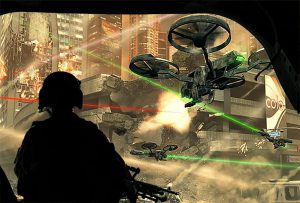 The need for these land forces to operate in and across multiple domains prompted General Milley to order the creation of an experimental combat unit known as the Multi-Domain Task Force. The Army recognizes that future combat units will have to be moderately self-sustaining, highly lethal, very fast, and very difficult to pin down on a battlefield; current Army force structure does not provide units that can maneuver and operate in this vein. The Multi-Domain Task Force will be the test bed for a concept of operations and force structure that moves beyond just countering adversarial anti-access and area denial (A2/AD) capabilities and will incorporate larger Joint efforts for maneuver and combat operations in the future.
The need for these land forces to operate in and across multiple domains prompted General Milley to order the creation of an experimental combat unit known as the Multi-Domain Task Force. The Army recognizes that future combat units will have to be moderately self-sustaining, highly lethal, very fast, and very difficult to pin down on a battlefield; current Army force structure does not provide units that can maneuver and operate in this vein. The Multi-Domain Task Force will be the test bed for a concept of operations and force structure that moves beyond just countering adversarial anti-access and area denial (A2/AD) capabilities and will incorporate larger Joint efforts for maneuver and combat operations in the future.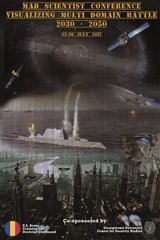 To explore this problem, Mr. Jeff Becker, President and Principal Analyst of Context LLC (and Mad Scientist Laboratory
To explore this problem, Mr. Jeff Becker, President and Principal Analyst of Context LLC (and Mad Scientist Laboratory 
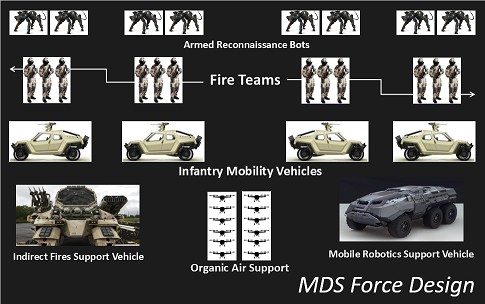
 – Equipping of soldiers with soft “
– Equipping of soldiers with soft “ – Lightweight helmet-mounted displays providing augmented and virtual reality images based on feeds from sensors – including cyber and electromagnetic environments to reach new levels of close-in
– Lightweight helmet-mounted displays providing augmented and virtual reality images based on feeds from sensors – including cyber and electromagnetic environments to reach new levels of close-in  – Metamaterials allowing lower profile, higher bandwidth antennas integral to the soldier suit as well as the vehicles and robots
– Metamaterials allowing lower profile, higher bandwidth antennas integral to the soldier suit as well as the vehicles and robots – Modernized assault weapons including guided rounds, increasing the probability of a hit
– Modernized assault weapons including guided rounds, increasing the probability of a hit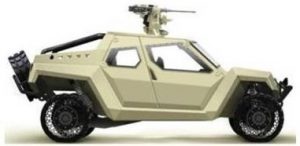 – Lightweight (4500 lbs.) Infantry Mobility Vehicles (IMVs) capable of
– Lightweight (4500 lbs.) Infantry Mobility Vehicles (IMVs) capable of 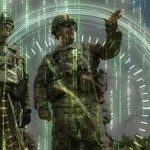 – Sensor system and
– Sensor system and  – Eight armed reconnaissance
– Eight armed reconnaissance 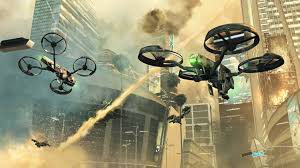 – Short range, low altitude quadcopter drones providing optical and electronic sensing to the unit, providing constant updates to the AR/VR backbone; potential for lethal capability
– Short range, low altitude quadcopter drones providing optical and electronic sensing to the unit, providing constant updates to the AR/VR backbone; potential for lethal capability – Squad Indirect Fires Support Vehicle (SIF-V) providing a range of indirect fires directly to each team
– Squad Indirect Fires Support Vehicle (SIF-V) providing a range of indirect fires directly to each team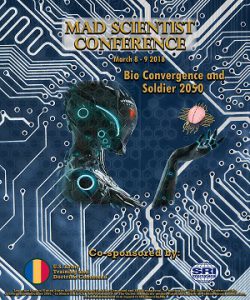 (Editor’s Note: Mad Scientist successfully facilitated the Bio Convergence and Soldier 2050 Conference on 8-9 March 2018 with our co-sponsor, SRI International, at their Silicon Valley campus in Menlo Park, California. With over 400 live and virtual participants, our first West Coast conference brought together World class expertise in biology and the tech convergences that will have a significant impact on the changing character of future conflict.)
(Editor’s Note: Mad Scientist successfully facilitated the Bio Convergence and Soldier 2050 Conference on 8-9 March 2018 with our co-sponsor, SRI International, at their Silicon Valley campus in Menlo Park, California. With over 400 live and virtual participants, our first West Coast conference brought together World class expertise in biology and the tech convergences that will have a significant impact on the changing character of future conflict.) This will be accomplished through improved cognitive and physical skills, as well as maintaining the critical role of human judgement with the
This will be accomplished through improved cognitive and physical skills, as well as maintaining the critical role of human judgement with the  1)
1)  offer unprecedented advances in medicine and the neurosciences, but also major vulnerabilities to Soldiers and the homeland. With advanced biological technology evolution comes a host of moral challenges, security vulnerabilities, and new threat vectors. In the future, protecting one’s genomic information will require safeguards similar to how we currently protect our digital identities. We will be more vulnerable to advanced bioweapons and information warfare available to states and non-state organizations.
offer unprecedented advances in medicine and the neurosciences, but also major vulnerabilities to Soldiers and the homeland. With advanced biological technology evolution comes a host of moral challenges, security vulnerabilities, and new threat vectors. In the future, protecting one’s genomic information will require safeguards similar to how we currently protect our digital identities. We will be more vulnerable to advanced bioweapons and information warfare available to states and non-state organizations. 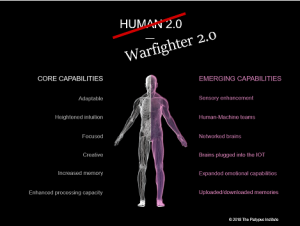 3) Customization: Advances in biology offer much greater customization in medicine which could improve how quickly our Soldiers learn and how they handle stress and anxiety associated with combat zones. Human 2.0 will have direct Warfighter applications, providing Soldiers with sensory enhancements, human-machine teaming, brains plugged into the Internet of Battle Things (IoBT), and uploadable / downloadable memories. Customization of battlefield medical care will be enabled by advanced diagnostics worn by Soldiers (uniforms and equipment) and eventually embedded.
3) Customization: Advances in biology offer much greater customization in medicine which could improve how quickly our Soldiers learn and how they handle stress and anxiety associated with combat zones. Human 2.0 will have direct Warfighter applications, providing Soldiers with sensory enhancements, human-machine teaming, brains plugged into the Internet of Battle Things (IoBT), and uploadable / downloadable memories. Customization of battlefield medical care will be enabled by advanced diagnostics worn by Soldiers (uniforms and equipment) and eventually embedded.  In other countries, we can expect to see the customization of humans with genome editing children to increase height, improve intelligence, and expand creativity.
In other countries, we can expect to see the customization of humans with genome editing children to increase height, improve intelligence, and expand creativity.  We will compete with states, non-state groups, and
We will compete with states, non-state groups, and  5)
5)  Did Dick Tracy’s wrist watch telephone or Star Trek’s communicator inspire future generations of scientists and engineers to build today’s smartphone? Or were they simply depicting the inevitable manifestation of future technology?
Did Dick Tracy’s wrist watch telephone or Star Trek’s communicator inspire future generations of scientists and engineers to build today’s smartphone? Or were they simply depicting the inevitable manifestation of future technology?  If we look back on old issues of Superman comic books that depict a 3D printer half a century before it was invented, we can see popular media has foreshadowed future technology, time and time again. Clearly, there are many phenomena, from time travel to force fields, that have not, and may not ever see the light of day; however, there are enough examples to suggest that dedicated and forward thinking scientists, trying to defend the United States, should consider this question:
If we look back on old issues of Superman comic books that depict a 3D printer half a century before it was invented, we can see popular media has foreshadowed future technology, time and time again. Clearly, there are many phenomena, from time travel to force fields, that have not, and may not ever see the light of day; however, there are enough examples to suggest that dedicated and forward thinking scientists, trying to defend the United States, should consider this question:  Let’s get the 800 lb. gorilla out of the room first! Or, perhaps, the 800 lb. dinosaur by talking about biological warfare in the future. The movie Jurassic Park depicts the hubris of man trying to control life by “containing” its DNA. Our deeper understanding of DNA shows us that life is programmed to be redundant and error prone. It’s actually a fundamental feature that drives evolution. In the year 2050, if we are to control our genetically modified products, we must master containment and control for a system designed since the dawn of time to NOT be contained. Forget bio-terror…What about bio-Error?!
Let’s get the 800 lb. gorilla out of the room first! Or, perhaps, the 800 lb. dinosaur by talking about biological warfare in the future. The movie Jurassic Park depicts the hubris of man trying to control life by “containing” its DNA. Our deeper understanding of DNA shows us that life is programmed to be redundant and error prone. It’s actually a fundamental feature that drives evolution. In the year 2050, if we are to control our genetically modified products, we must master containment and control for a system designed since the dawn of time to NOT be contained. Forget bio-terror…What about bio-Error?!  Furthermore, the lesson in Jurassic Park from the theft of the frozen dinosaur eggs shows us the asymmetric impact that theft of genetic products can yield. Today, our adversaries amass databases on our genetic histories through theft and globalization and one only has to ask, “What do they know that we should be worried about?”
Furthermore, the lesson in Jurassic Park from the theft of the frozen dinosaur eggs shows us the asymmetric impact that theft of genetic products can yield. Today, our adversaries amass databases on our genetic histories through theft and globalization and one only has to ask, “What do they know that we should be worried about?” Let’s move from biology to chemistry. A chemist will argue that biology is just chemistry, and at some level it’s true. Like the movie Outlander and anime like Cowboy Bebop, today’s Middle East battlefield shows the use of CAPTAGON, an addictive narcotic blend used to motivate and subjugate radical Islamists. In 2050, our mastery of tailored chemistry will likely lead to more addictive or targeted drug use that could elicit unpredictable or illogical behaviors. Controlled delivery of mood/behavior altering drugs will frustrate efforts to have a military workforce managed by reliability programs and will require layered and redundant controls even on trusted populations. Such vulnerabilities will likely be a justification for placing weapons
Let’s move from biology to chemistry. A chemist will argue that biology is just chemistry, and at some level it’s true. Like the movie Outlander and anime like Cowboy Bebop, today’s Middle East battlefield shows the use of CAPTAGON, an addictive narcotic blend used to motivate and subjugate radical Islamists. In 2050, our mastery of tailored chemistry will likely lead to more addictive or targeted drug use that could elicit unpredictable or illogical behaviors. Controlled delivery of mood/behavior altering drugs will frustrate efforts to have a military workforce managed by reliability programs and will require layered and redundant controls even on trusted populations. Such vulnerabilities will likely be a justification for placing weapons  and infrastructure under some level of
and infrastructure under some level of  Today, the thought of
Today, the thought of  Will the point of need manufacturing systems of the future be soulless biological factories like those depicted in Frank Herbert’s book series, “Dune”? As we prepare for engaging in a multi-domain battlespace by extending our eyes and ears over the horizon with swarming autonomous drones are we opening a window into the heart and mind of our
Will the point of need manufacturing systems of the future be soulless biological factories like those depicted in Frank Herbert’s book series, “Dune”? As we prepare for engaging in a multi-domain battlespace by extending our eyes and ears over the horizon with swarming autonomous drones are we opening a window into the heart and mind of our  Some final thoughts for the year 2050 when we maintain a persistent presence off planet Earth. As Robert Heinlein predicted, and recent NASA experiments proved, our DNA changes during prolonged exposure to altered gravity. What of humans who never stepped foot on Earth’s surface, as shown in the recent movie, The Fate of our Stars. Eventually, non-terrestrially based populations will diverge from the gene pool, perhaps kindling a debate on
Some final thoughts for the year 2050 when we maintain a persistent presence off planet Earth. As Robert Heinlein predicted, and recent NASA experiments proved, our DNA changes during prolonged exposure to altered gravity. What of humans who never stepped foot on Earth’s surface, as shown in the recent movie, The Fate of our Stars. Eventually, non-terrestrially based populations will diverge from the gene pool, perhaps kindling a debate on  add another dimension to the cadre of weapons of mass destruction? I would argue that popular media can help spur these discussions and give future mad scientists a glimpse into the realm of the possible. To that end, I think we can justify a little binge watching in the name of national security!
add another dimension to the cadre of weapons of mass destruction? I would argue that popular media can help spur these discussions and give future mad scientists a glimpse into the realm of the possible. To that end, I think we can justify a little binge watching in the name of national security! 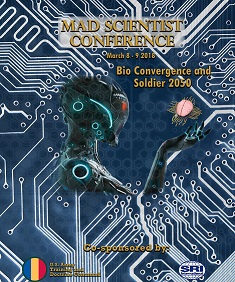 If you enjoyed this post, please check out the following:
If you enjoyed this post, please check out the following: